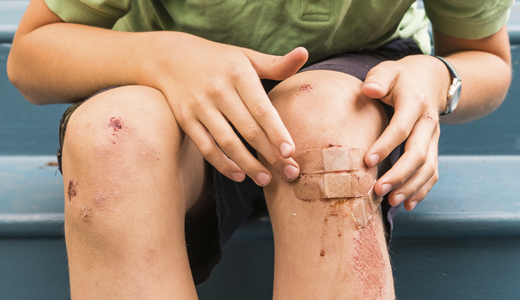Can video games help children cope with pain? Many scientists say so. And they say the therapeutic effect may work on two levels.
First, video games provide a distraction. When they’re engaged with something onscreen, they simply have less available mental space to focus on what’s hurting.
And at a secondary level, scientists have begun to wonder if kids’ interactions with video games may actually be neurologically influencing and changing the way they experience bodily discomfort. Jeffrey I. Gold, a pediatric pain researcher at the University of Southern California and the director of the Pediatric Pain Management Clinic at Children’s Hospital Los Angeles, said in an interview with psychcentral.com back in 2010, “Virtual reality produces a modulating effect that is endogenous [internally produced], so that analgesic influence [pain killing] is not simply a result of distraction but may also impact how the brain responds to painful stimuli. The focus is drawn to the game not the pain or the medical procedure, while the virtual reality experience engages visual and other senses.”
But I have to admit that, when I first heard this a few years back, I was skeptical. Come on, I thought. Are video games really making a difference in the lives of physically hurting kids?
I had an unexpected opportunity to see this theory put to the test recently.
My family and I were at our kids’ swim team potluck and were just about to call it a night when my barefoot son stepped on a pine needle; about a half-inch splinter got lodged in the ball of his right foot. Looking at the offending pine splinter, I wasn’t completely sure how I was going to get it out. It wasn’t terribly deep, but it wasn’t going to be a quick removal either. And I was pretty sure its extraction was beyond my basic first-aid skills.
Thankfully, the mother and father of some other kids are both nurses, and they graciously invited us to come over to their house where they had the right stuff—both skills and sterile instruments—to get it out. My son was still pretty worked up when we got there, and became even more so when the father started working on my boy’s poor foot. Then one of the other family members handed my son a tablet computer and suggested he play something to distract him from the painful splinter removal.
And you know what happened? It was like someone flipped a switch. My son immediately stopped crying and was utterly occupied in the game for the next 45 minutes or so while our nurse friend slowly teased (and cut) the splinter out.
Frankly, I thought it was remarkable that a video game could provide such a powerful distraction. We kept asking him if he was hurting, and he kept cheerily saying, “Nope.”
It’s not often that I get first-hand corroboration of the kinds of research we often summarize in Culture Clips. But it was hard to argue with the results in this case. Giving my mildly wounded little guy a tablet computer was just about as good as giving him a shot of anesthetic. Maybe even better. I couldn’t help but recall this study and think, Man, I guess they were right.
Taking things one step further, however, I also think this research—and my son’s experience—is pretty persuasive evidence of just how powerfully entertainment media can engage our minds and even our bodies. When we’re completely engrossed in entertainment, there may be things going on, physiologically and neurologically, that we aren’t even aware of.
I’m grateful those who study pain are finding new ways like this to help kids cope with the hurts they experience. And I’m even more experientially cognizant of how powerfully media can affect our minds and bodies.






Recent Comments